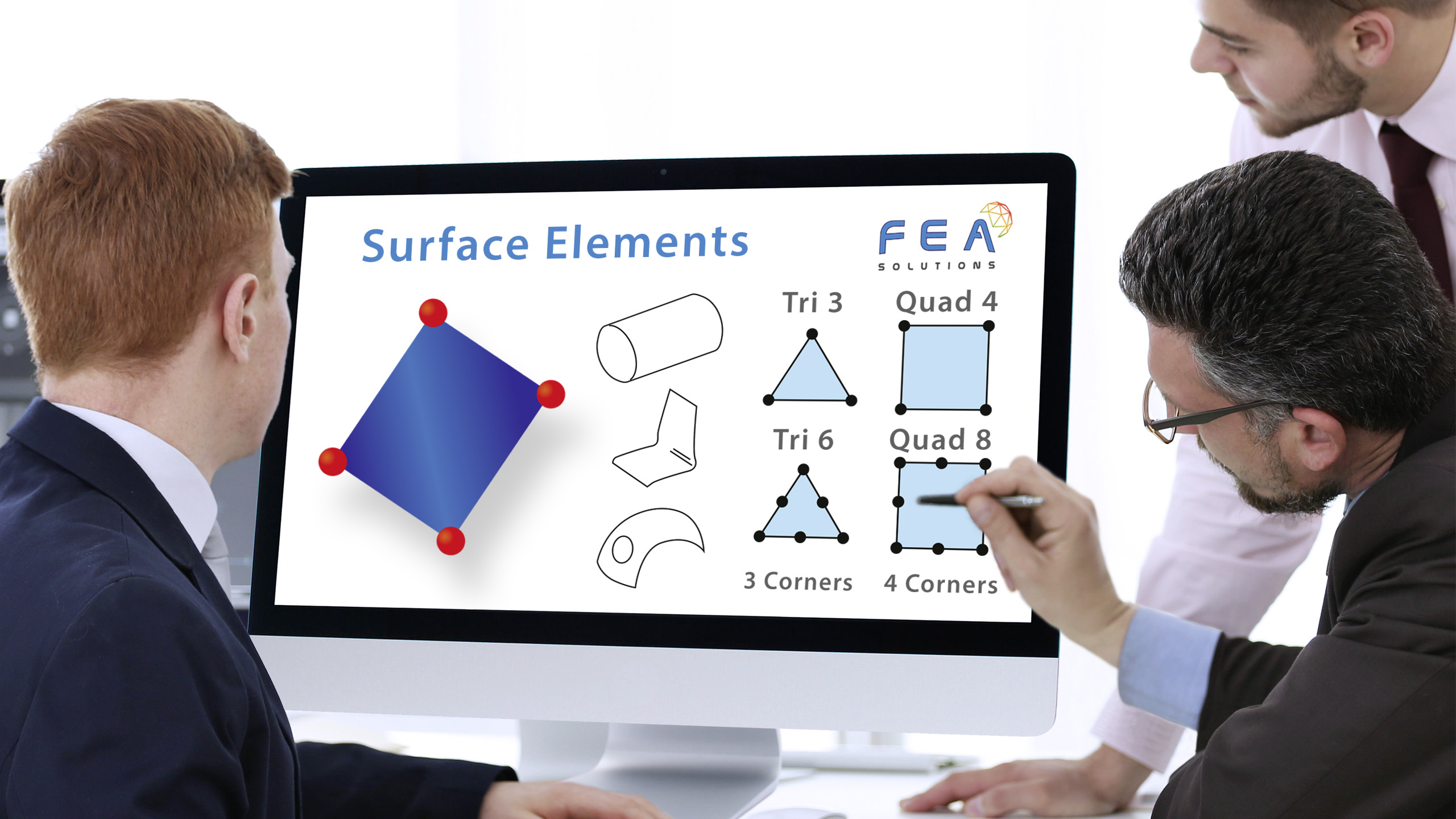
29 Nov Surface Elements
Surface Elements consist of 3 or 4 corner nodes, and the mid-surface of a part. Once created, the FEA software requires the surface thickness to be assigned.
Surface Elements are used when two part dimensions are much greater than the third dimension. They are used when a structure contains shell-like parts, such as pressure vessels and sheet metal parts.
On Surface Elements such as Plate Elements, 5 Degrees of Freedom (DOF) are defined for the nodes. The one DOF that is not represented is rotation normal to the plane of the element. Because of the 5 DOF, actions such as out of plane bending are simulated accurately with plate elements. This makes plate elements a better choice for thin walled parts than solid elements, as the FEA model would need multiple solid elements in the thickness to achieve a similar results.
There is a simpler version of Plate Elements, called Membrane Elements. These are similar to Plate Elements, but support only Translational DOFs, and not Rotational DOFs. Hence Membrane Elements do not support or transmit loads normal to the surface. These elements are frequently used to represent fabrics or rubber membranes.
Please call us today on 01202 798991. We will be happy to assist you with our in-depth simulation skills.
